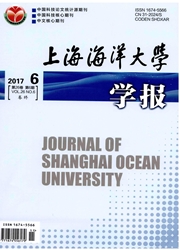

 中文摘要:
中文摘要:
采用同工酶技术和流式细胞术研究了刀鲚肝脏、眼睛、肾脏、肌肉、鳃和血清6个组织的乳酸脱氢酶(LDH)及尾鳍、鳃、肌肉、性腺和肝脏5个组织的细胞核DNA含量,旨在为刀鲚遗传背景和种质标准的建立提供技术参数。结果显示:(1)刀鲚不同组织的LDH同工酶呈现一定的组织特异性,眼睛是LDH表达较为典型的组织;除肌肉和血清没有LDH2条带外,其余组织均出现了5条同工酶酶带,并且相对迁移率一致,各组织中均未见LDH-c基因的表达。(2)刀鲚鳃、肌肉和肝脏3个组织的细胞核DNA含量不存在显著差异(P〉0.05),但都显著低于尾鳍、卵巢细胞DNA含量(P〈0.05);测定的鳃、肌肉和肝脏组织细胞核的DNA含量与单倍体的精子细胞的比值依次为2.16、2.19和2.22,即刀鲚为二倍体鱼类。此外,肝脏细胞容易从组织上脱落,较易制成单细胞悬液,是用流式细胞仪进行倍性分析的适宜试材;如果要保持生物体健康存活状态,则剪取小部分尾鳍进行倍性分析为宜。研究亮点:首次报道了刀鲚的乳酸脱氢酶同工酶酶带相对迁移率、组织分布、活性扫描及细胞核DNA含量。研究发现,刀鲚眼睛是LDH表达较为典型的组织;刀鲚是二倍体鱼类,肝脏细胞是进行倍性分析的适宜试材,这为刀鲚遗传背景和种质标准的建立提供了科学依据。
 英文摘要:
英文摘要:
The aim of this study was to provide technical parameters for the foundation of genetic background and resources in Coilia nasus. In the present study, lactate dehydrogenase isozymes (LDH) in liver, eye, kidney, muscle, gill and serum, and DNA content in tail fin, gill, muscle, gonad and liver were studied by isozyme and flow eytometry techniques. The results indicated that: (1) The LDH in different tissues had a tissue specialty. All the tissues exhibited five isozyme bands and same relative migration rate, except for LDH-e expression. No LDH2 bands were found in muscle and serum. (2) No significant differences were observed in DNA content in gill, muscle and liver ( P 〉 0.05 ), but DNA content in those tissues was significantly lower than that in the tail fin and ovary cells ( P 〈 0.05 ). The ratio of DNA content in gill, muscle and liver and haploid spermatide were 2.16,2.19 and 2.22, respectively. Moreover, the hepatocytes which were easily isolated from tissue and made into single cell suspension were good materials for ploidy analysis by flow eytometry.
 同期刊论文项目
同期刊论文项目
 同项目期刊论文
同项目期刊论文
 期刊信息
期刊信息
